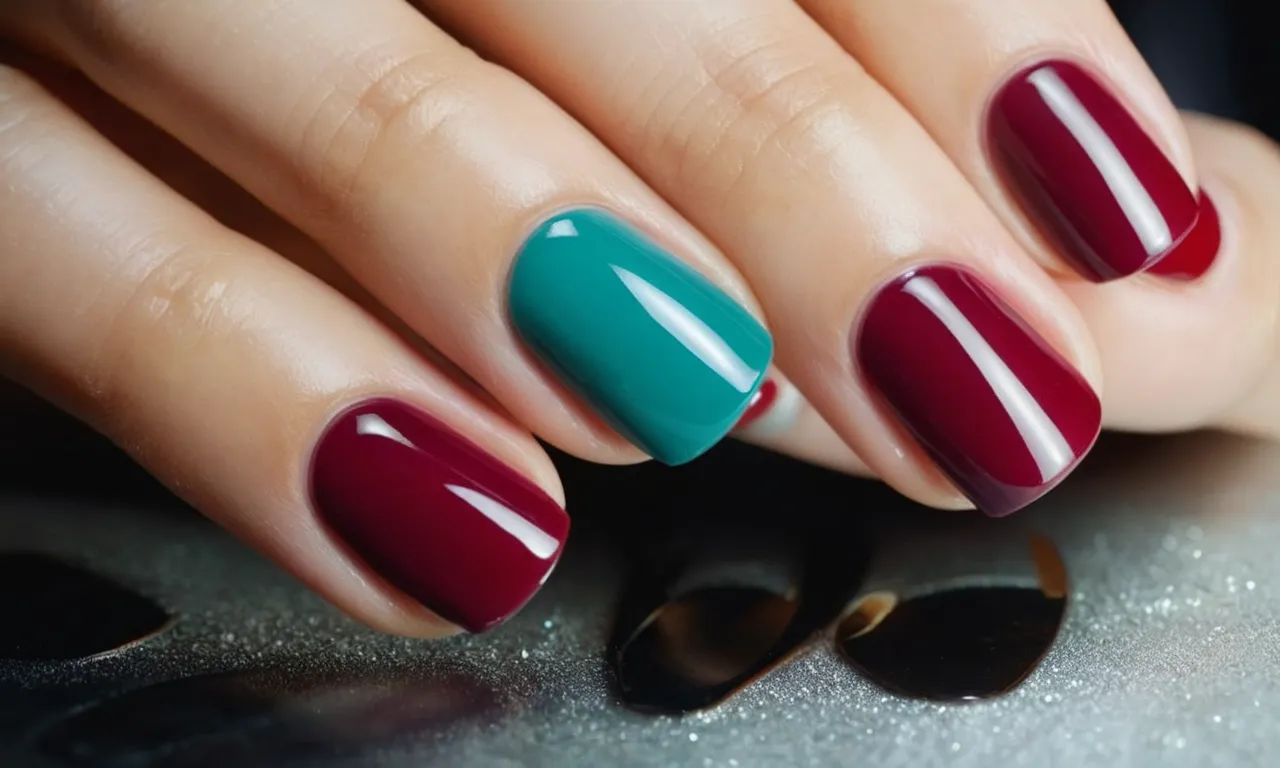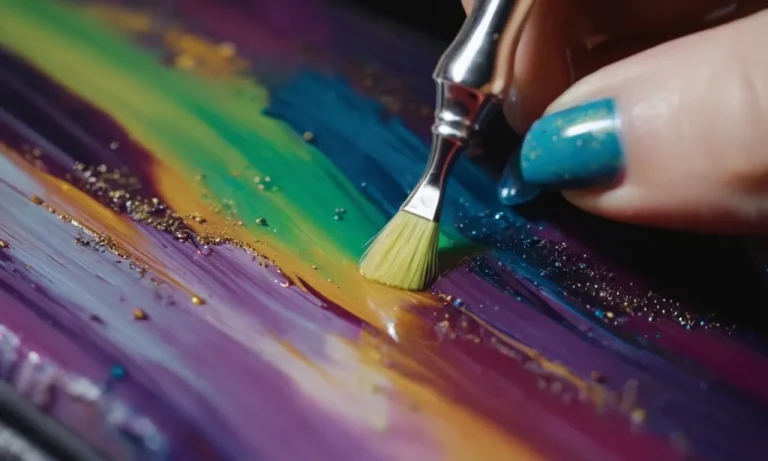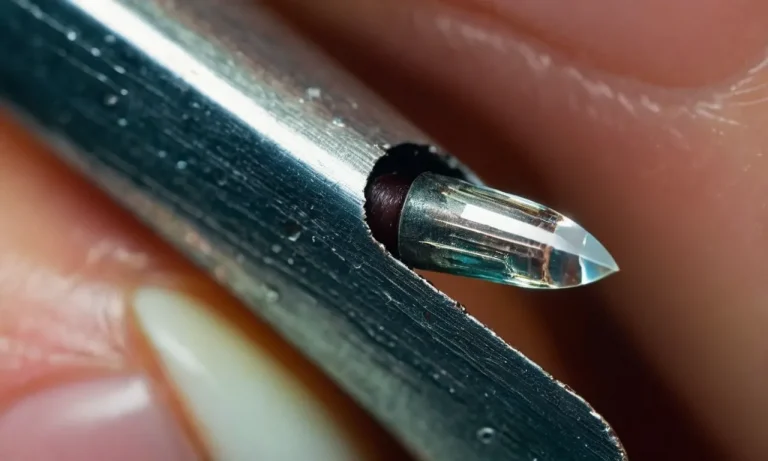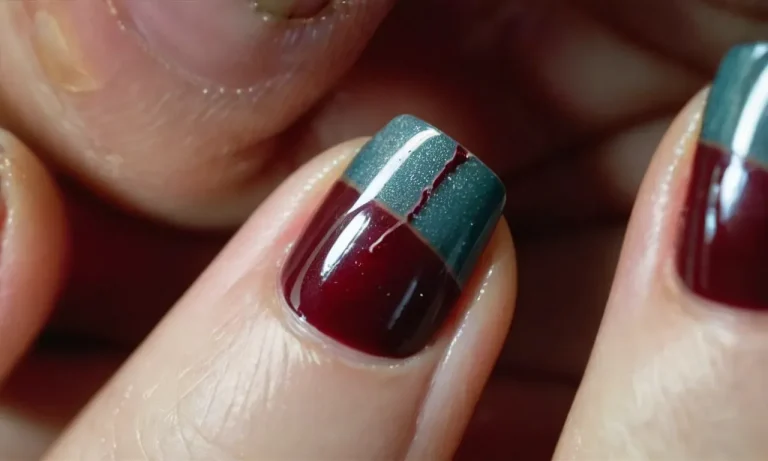How To Apply Acrylic Nails: A Step-By-Step Guide For Beginners
If you want beautiful, long-lasting nail enhancements without spending a fortune at the salon, learning to apply acrylic nails yourself is a great option. With some practice, you can give yourself a flawless acrylic manicure from the comfort of your own home.
If you’re short on time, here’s the quick take on applying acrylic nails: Prepare nails by shaping and buffing, apply nail tips if desired, then use acrylic powder and liquid to build and shape nails on nail forms. File and shape final nails, then polish as desired once dry.
In this comprehensive DIY acrylic nail tutorial, you’ll learn all the steps and techniques needed to sculpt beautiful acrylic nail enhancements, including:
* Getting the right acrylic nail supplies and tools
* Preparing your natural nails
* Applying nail tips or sculpting over nail forms
* Mixing acrylic powder and liquid
* Shaping and filing finished nails
* Polishing your new acrylics
Acrylic Nail Supplies You’ll Need
Acrylic powder and liquid
Acrylic powder and liquid are the core ingredients that allow you to sculpt and build acrylic nails. The powder is a fine polymer powder that comes in various colors and textures, while the liquid is a monomer liquid that acts as the adhesive when mixed with the powder.
Choose a trusted professional brand like Young Nails, CND, or Kodi for high-quality, salon-grade acrylics. Opt for basic colors like clear, white, pink, and nude to start.
Nail tips and/or forms
Nail tips and forms provide the foundation and shape for applying acrylic powder and building the nail. Tips are pre-shaped artificial nails that get adhered to your natural nail first. Forms are thin pieces of plastic that get wrapped around your natural nail to create the desired shape.
Most beginners find tips easier to work with, but you can experiment with both options. Have a range of sizes on hand to accommodate different nail beds.
Primers, glues, seals
Primers, glues, and seals help prep the natural nail and enhance the application and longevity of acrylics. Primers slightly roughen the nail surface for better acrylic adhesion. Glues like nail dehydrator help the tips stick to your real nails.
Seals like nail prep or pH bonder create a protective layer between your nails and acrylics to prevent damage. Don’t skip these crucial steps!
Files, buffers, clippers
Proper filing, shaping, and buffing tools are essential for every step of the acrylic nail process. You’ll need:
- Nail clippers: to trim natural nails before application
- Professional e-files or hand nail files: for shaping acrylic after application
- Buffers and shiners: to refine shaping and create shine
Look for high-grit options (180 grits or higher) for best results.
Acrylic nail brushes
Acrylic brushes allow you to pick up and apply acrylic powder and liquid to the nails. They typically have a flat, wide brush on one end and a kolinsky sable pointed brush on the other. The pointed brush is used for precise application and detail work.
Invest in a couple of quality brushes like Alpha Brush acrylic kolinsky sets.
Preparing Nails for Acrylic Application
Trimming and shaping nails
The first step in preparing natural nails for acrylic application is proper shaping and trimming. Start by soaking fingers in warm water to soften cuticles and make trimming easier. Gently push back cuticles using a cuticle pusher, being careful not to damage the nail bed.
Then, use nail clippers to trim nails straight across to achieve the desired length and shape. File the edges of the nails with a 100/180 grit file to smooth any jagged edges. Shape the tips uniformly into a squared, rounded, squoval or another preferred shape using a nail file.
Proper shaping lays the foundation for a professional acrylic manicure.
Removing oils and prep
Before acrylic application, it’s vital to remove any oil, dirt, or debris from the natural nails to allow proper adhesion. Use a nail dehydrator or acetone-based nail prep solution applied with a lint-free wipe or cotton pad. Wait 60 seconds for this to fully dry.
Properly prepping the nails prevents lifting and allows acrylics to last longer. Alternatively, gently buff the shine off nails with a 100/180 grit file. Just don’t over-file, as thin nails can cause cracking and breakage issues down the road.
Applying nail dehydrator
After removed natural nail surface residue and dirt with a nail prep solution, apply an acrylic nail primer or dehydrator. This will further remove moisture and oils, prepping the nail bed for adhesion with acrylic products.
Many nail dehydrators like Gelish pH Bond or CND Super Shine contain methanol, which dries nails by removing moisture. Be sure to use a vitamin E-infused brush specifically designed for application to avoid germ exposure.
Allow the nail dehydrator to dry completely before moving onto the next step of acrylic application. Taking the time to properly dehydrate and prime the natural nails ensures longer wear.
Priming nails
The final pre-acrylic step is to apply a nail primer, which is formulated to bond with both natural nails and acrylic. Using a primer promotes adhesion and prevents lifting or cracking of acrylics. Typical active ingredients in primers are methacrylic acid and HEMA.
Apply a thin but thorough layer of primer over each natural nail and let it dry before acrylic application, usually for 60 seconds. Popular primers include CND Stickey resin nail bond, NSI Max Prime Adhesion Booster, and Young Nails Protein Bond.
While using a primer is extremely important, avoid overuse, since too much can damage the nail. Using an acid-based primer within a complete acrylic nail system ensures the best and longest-lasting results.
Applying and Shaping Acrylic Nails
Gluing on nail tips (optional)
If your natural nails are too short or weak, you may want to apply artificial nail tips before sculpting the acrylic nails. After cleaning and prepping the natural nails, use nail glue to adhere the tips on top of your nails.
Make sure the tips extend just past the edge of your fingers for the most flattering look. File and shape the tips to your desired length and shape before applying acrylic.
Sculpting nails on forms
If not using nail tips, you can sculpt acrylic nails right on top of nail forms. Apply a thin layer of primer to the natural nail first to help the acrylic adhere better. Place a form under each nail and make sure it fits tightly against the cuticle area.
Then apply a bead of acrylic at the base of the nail and use a brush to gently push it down toward the free edge, creating your desired nail shape and thickness. Let each layer dry before adding more acrylic.
Mixing and applying acrylic
Acrylic powder and liquid polymer have to be combined to activate the acrylic ingredients before applying the mixture to the nails. Use a ratio of about 2:1 powder to liquid and mix small amounts at a time, dipping your brush into the liquid and then into a small mound of powder.
Work quickly as acrylic begins hardening in about a minute. Apply to the nail forms using smooth, even strokes to create a strong, seamless nail.
Shaping and detailing nails
Once the acrylic has fully set and hardened, you can begin perfecting the shape of your new nails. Use a coarse nail file to taper and thin the edges. Give the nails a uniform shape and smooth over any bumps in the acrylic. Then use a finer grit buffer to refine the nails and make them shine.
You can also use sanding bands and buffers to create a pretty high-gloss finish. Add further enhancements like airbrushed nail art at this time if desired.
Filing and buffing
The final step is perfecting the surface of the acrylic by filing and buffing. Use a medium grit file first to smooth the surface. Buffing helps close the porous acrylic surface for a glass-like shine that also makes nails stronger and less prone to cracking or lifting.
Go over nails with a three-way buffer block, using each grit in succession from rough to fine. Finish with a quick shine buffer pad or buffing cream to make your new acrylic nails dazzlingly glamorous.
Finishing Touches: Polishing Acrylic Nails
Applying Color Polish
Now that your acrylic nails have been shaped and buffed to perfection, it’s time for the fun part – adding color! When painting acrylic nails, it’s important to use a high-quality nail polish that is specifically formulated for acrylics. Many regular polishes can chip or peel off of acrylic nails.
An acrylic nail polish will have ingredients that allow it to flex with the acrylic and adhere properly.
Before painting, make sure there is no dust or oil on the nails by wiping them with nail polish remover. Apply a very thin layer of base coat first to help the polish adhere. Let the base coat dry completely before moving on.
When using darker colors like deep reds or blues, applying a coat of white polish first will help the color really pop.
Apply two thin coats of polish, letting each coat dry in between. Using multiple thin layers will give you better coverage and a glossier finish than one thick coat. Don’t forget to seal the tips! Let the polish dry completely before applying a top coat.
Top Coat for Protection and Shine
A good top coat is essential for protecting acrylic nails and giving them a salon-perfect shine. Regular top coats can end up wrinkling or peeling off of acrylic nails. Using a flexible top coat formulated for acrylics will ensure it glides on smoothly and adheres properly.
Apply a fast-drying top coat like Seche Vite or Essie Gel Setter, covering the entire nail and wrapping the tips. This will seal in your polish, help it last longer, and give your nails a glossy wet-look finish.
You want the top coat to be slightly thick, but avoid over-brushing as too many layers can cause it to wrinkle or bubble up. Let your nails dry flat after applying top coat to prevent any dragging or smudging. Reapply every 2-3 days to keep your manicure fresh!
Cuticle Oil for Finished Look
The final step is applying cuticle oil around the nail edges. Acrylic nails can cause dryness around the cuticles, so it’s important to keep them hydrated. Using a nail and cuticle oil will ensure your cuticles stay healthy and help prevent lifting.
Look for a nourishing oil like jojoba or vitamin E. Apply a drop around each nail, gently massaging into the cuticles and acrylic. This will replenish moisture, enhance shine, and give your nails a more finished, salon-like look.
Buffing your nails with a soft cloth after applying oil will remove any excess oil and really make them sparkle!
With these finishing touches of polish, top coat, and cuticle oil, your DIY acrylic nails will look like a million bucks! Just be sure to avoid excessive water exposure and use gloves for cleaning or gardening to help prolong your manicure.
Follow these acrylic nail care tips and you’ll be rocking a perfect manicure for weeks.
Conclusion
While the acrylic nail process takes some practice, with the right supplies and techniques, you can give yourself a beautiful, long-lasting acrylic manicure without leaving home. Just be sure to prep nails properly and work slowly as you apply products.
With a bit of patience, anyone can perfect the acrylic sculpting process. Enjoy showing off your gorgeous new nail enhancements!







